OUR PROGRAMS
HEALTH, NUTRITION AND SANITATION
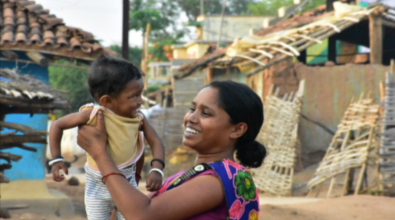
WOMEN AND CHILD HEALTH
Addressing the malnutrition challenge in the Indian context is one of the key focus areas for the Amhi Amchya Arogyasathi the generational consequences the problem has a high prevalence of childhood stunting and maternal and childhood Anemia. It has to make a strategic investment that plays a gap filling or a catalytic role in the ecosystem and Govt for betterment health initiative. The effort broadly, has been to look for existing and emerging ‘platforms’ to deliver enhanced nutrition. Organization is taking initiative to reduce maternal mortality, neonatal mortality & reduce malnutrition in tribal, rural & urban poor area through trained Arogya Sakhi and to address the challenge of stunting, an intense multi-sector approach looking at maternal care, water and sanitation, behavioral change communication with the help of Angawadi Centre, PHC, Rural and District Hospital, ASHA, MPW and Arogyasakhi etc. Some of the key initiatives undertaken by the organization are:
♦ Community based Management of Acute malnutrition in selected districts of Maharashtra.
♦ To assist strengthening and improvement of public health services providing by Government.
In addition, organization has created Nutrition initiative with a panel of leading experts, networks in order to develop and advocate an informed stand on policy relating to nutrition. Amhi Amchya Arogyasathi is also investing in the development of rapid survey tool for effective programming and planning.
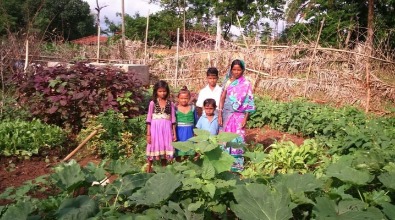
NUTRI/KITCHEN GARDENS
The concept of farming and cultivation is not new to the tribal communities of India. However, it has remained limited to cash crop cultivation and mostly used for revenue generation. The main objective of introducing the concept of Nutri/ Kitchen Gardens was to encourage tribal women and child development to cultivate healthy food crops in their backyards. A Nutri/ Kitchen Gardens ensure an inexpensive, regular and handy supply of fresh vegetables, which are basic to nutrition. Green vegetables contain vitamins and minerals, which protect us against diseases. Tribal and rural communities have easy access to all the essential resources like land and water but they lack knowledge about the nutritional value and scientific consumption pattern of the available and easily-cultivable nutritious food products.
Hence, Nutri/ Kitchen Gardens may be regarded as a simple but innovative option to: Bridge the gap between the available resources and its utilization in a sustainable manner Address issues like malnutrition Create additional revenue-generating opportunities for farmer communities, especially women Introduce healthy eating practices.
Nutri/ Kitchen Gardens model to solve Rural & Tribal Malnutrition: Malnutrition is the condition that results from eating a diet in which certain nutrients are lacking, are in excess (too high in intake) or in the wrong proportion. The term malnutrition encompasses both over-nutrition and under-nutrition. Although under-nutrition is generally observed amongst the rural and under-developed part of the world, it is a major challenge to human and economic development. In the tribal areas unable to get enough food to meet their dietary needs. Another most of the people do not get enough vitamins and minerals which, over a period of time, can lead to complications like night blindness.

DRINKING WATER & SANITATION
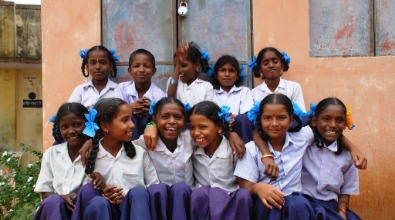
SCHOOL WATER AND SANITATION PROJECT
Amhi Amchya Artogyasathi is also taken up the School Water and Sanitation Project that addresses the core need and issues of drinking water, sanitation and hygiene promotion in Anganwadi and primary schools. The core activities under this project are solid waste management through vermi and organic composting, Circle Garden to get nutritious vegetables and sanitation education, awareness campaigns and workshops for all the villages and schools/ Anganwadis and holding cluster level workshops for school teachers and community members. Students of selected primary schools are assimilating with the importance of good practices of health and hygiene, which they, in turn, take to their homes and communities. The school children are also taught to get involved in the activities like regular cleaning toilet units, watering the plants/trees and maintenance of school gardens, cleaning of the school campus etc. This develops a sense of ownership among the students. The methodology of implementation is particularly appreciated as it involves the schools, Gram Panchayat, School Management Committees, Village Education Committees, parents and community as a whole.
Preventive Child protection in Communities
Child protection refers to preventing and responding to violence, exploitation and abuse against children – including commercial sexual exploitation, trafficking, child labour and harmful traditional practices, such as female genital mutilation/cutting and child marriage. (Ref: Unicef)

AWARENESS AMONG COMMUNITY
Awareness among the children about child rights, child protection, child labour and ill effects of child marriage. Front line health workers were sensitized on nutrition, MCH for adolescent girls.
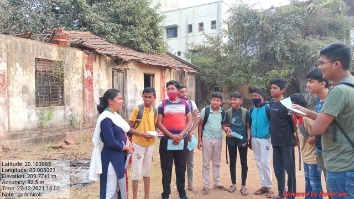
RESCUING CHILDREN
Coordination with the Village child protection committee (VCPC). Protected from child marriage and early marriage girls were safeguarded from gender based
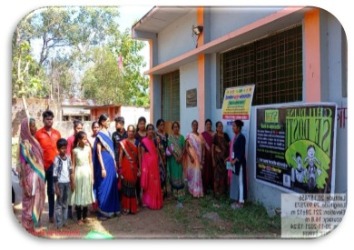
STRENGTHENING CHILD PROTECTION INSTITUTIONS
Strengthening Child Protection Institutions through sensitization, training and capacity building. Focusing on strengthening school management committee and village level child protection

WORKS WITH GOVERNMENT AND LAW ENFORCEMENT
Organising interface meeting with DCPO, child welfare committee (CWC) at district level and addressing their concerns with line Govt. departments and officials trained, sensitised in order to work for the concern.
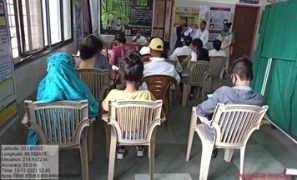
STRENGTHENING EXISTING CHILD PROTECTION SYSTEMS
Sensitized the DCPOs on child protection, understanding child protection systems, discussed their roles, the challenges they faced and how they can be overcome. Orientation to concepts of child protection, the organization child protection policy and implementation of the same.
SUSTAINABLE AGRICULTURE

SUSTAINABLE AGRICULTURE
Amhi Amchya arogyasathi is initiating the development project for get a resource for sustainable Livelihood and Agriculture. In Vidarbha region of Maharashtra, we implementation of the watershed Structures (CCT, GB, CB, Farm ponds, Check Dam etc), Lift Irrigation, and used the modern techniques of agriculture to reduce the input cost and to increased production. E.g SRI, SRT, Line Sowing,, Mix Crop, Broad Bed Furrow, Farming and kitchen Garden etc. organization also supported to get a livelihood source from the forest to collecting the Non Timber forest products (NTFP) to conserve and survive it. All these initiatives show that to increasing productivity of agriculture, income generation activity, adopting advance technology methods, cropping pattern and package of Practices. The peoples are changing their perspective towards agriculture and doing agri based allied activities as entrepreneurship to develop socio-economic status.
AAA has successfully implemented by adopting new technology, income generation activity and sustainable agriculture with allied activities. However, AAA team feels to formation of organic farmers groups, to do get more income from that kind of activities. E.g. Ecological and Circle, kitchen, Garden, Learning Demo plots, Therefore, organization is covering the capacity building aspect, facilitation for livelihood action plan preparedness and self-help Groups. Organization also takes initiative for the watershed structure in villages to increasing the water level and helps to soil erosion during the rainy season. Due to that the farmers have to support to develop their farming.
WOMEN EMPOWERMENT AND GENDER

WOMEN EMPOWERMENT AND GENDER
Gender is a mainstay of Amhi Amchya Arogyasathi work. We firmly believe that while GENDER is often perceived as the favoring of women’s rights and responsibilities, it goes beyond women. Men and women, because of their gender, face different situations that oblige them to acquire different capacities and knowledge while also recognizing that they have different needs and interests. An approach that considers only the situation of women, thus, will not bring about the desired transformation. Since Gender equality can only be achieved when men and women are equally empowered, Amhi Amchya Arogyasathi gives emphasis to level the playing field. It does this by building up women’s social capital and management capabilities and facilitating their empowerment by organizing them into solidarity groups (SHGs). The intervention also extends to building women’s capacity to address their and their children’s concerns through health services and providing personal care advisories, and literacy, numeracy and personality development training. It also actively engages men in creating avenues for effective representation in the decision-making bodies of the village. Additionally, network of institutions of Amhi Amchya Arogyasathi help them acquire livelihood and life skills, by providing them with financial and business development support to start and successfully manage micro-enterprises, creating avenues of access to micro-enterprises. Also creating platform specifically addresses women’s concerns issues, rights and responsibilities to entire development sector. Amhi Amchya Arogyasathi has started WSHGs since 1990, in Gadchiroli & Chandrapur district. Now we are working with 574 SHG’s as self-employment, group employment through women self-help groups (WSHG).
Organization has organized 6133 women in that process. In between that 114 WSHG are credit linkages as per NABARD “A” level ranking. In Addition to this, women have to establish as self-organization joining with 100 WSHGs with 1231 members are involving. Every year they borrow the loan from banks and return on time. It is a feedback received from the bank managers, answered that women are more honest, accountable and efficient towards borrowing and returning loan. Women Empowerment Program believes that the every human being on this earth is equal and should be treated accordingly. Any inequity between men and women will not make us nation. This program purely stands on the right based approached for the women. This program has no funding but only its necessity in the field to address women issues triggered AAA to continuous work on it. This program works in the areas like – Women harassment, Women mobilization through formation of cluster, block and district level federations, creation of awareness among women to increase their participation in Gramsabha and Grampanchyat especially facilitating activities for the economic and social development of the women in society. Cluster and block level federations of the women monitors the government program such as MGNREGS, Ration, Public Health services and other government schemes.
Organization works on that social rights, Political rights, Economic Stability, Judicial Strength and all other rights should be also equal to women. There should be no discrimination between Men & Women. Thus, in order to achieve the status of a developed country, the society needs to transform its immense women force into an effective human resources and this possible only through the empowerment of women. Empowering women to participate fully in economic life across all sectors is essential to building stronger economies, goals for development and sustainability, and improve the quality of life women, men and communities.
6348 Women organized into 529 SHGS Accomplishments
♦ Emerging community leaders and social activists from the staff
♦ Canalisation of women’s initiatives in socio-economic-political uplift through self-help group movement
♦ Capacity building of community based organizations for implementation to a large extent of their rights for life with dignity
♦ Community recognition for local health traditions, natural resource management and community based rehabilitation approach for persons with disability
♦ Few partner villages advancing towards establishment of local self-government having integrity with and influence over state and union government
♦ Regional campaign/network initiation in particular issues of concerns and resource support group built up including media
POLICY ADVOCACY
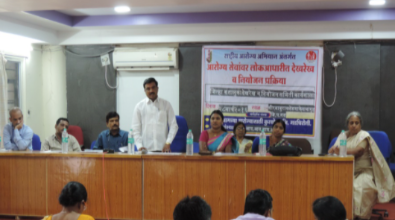
COMMUNITY BASED PLANNING & MONITORING
Amhi Amachya Arogyasathi is working on Community Based monitoring and planning and Nutritional Health Services with technical guidance of SATHI, Pune under National Health Mission (NHM) Maharashtra. Organization also has become pioneer in decentralized health planning to activate government health services through VHNSCs and other committees on PHCs, blocks and district level. Organization is taking initiative to improving the availability and access to quality healthcare in public sector. Especially, those are residing in rural areas, the poor, women and children. The NRHM proposes an intensive accountability framework that includes Community-based Monitoring (CBM) as one of its key strategies. Community-based Monitoring involves drawing in, activating, motivating, capacity building and allowing the community and its representatives e.g. community based organizations (CBOs), people’s movements, voluntary organizations and Panchayat representatives, to directly give feedback about the functioning of public health services.
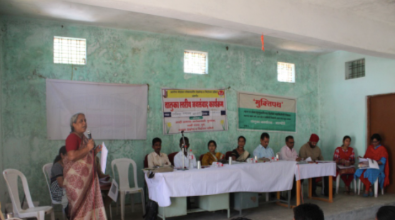
PROCESS MONITORING
Organization is assist as team lead for process monitoring in UMED- Maharashtra State Rural Livelihood Mission (MSRLM). The mission aims to eradicate the rural poverty building sustainable institutions of poor; it makes to get as a source of sustainable Livelihood. Organization works of promotion and nurturing of Community based Organizations particularly SHGs and their higher level federation.
SUSTAINABLE LIVELIHOOD
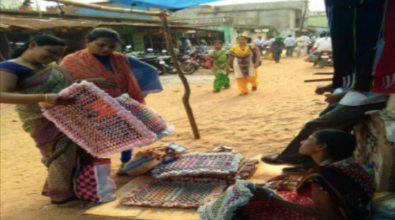
SUSTAINABLE LIVELIHOOD
The field programmes designed especially for communities living in rural areas, AAA has developed programmes for income generation and better utilization of resources. These include activities aimed at creating awareness among the communities about the ecological significance of the areas around which they live. We trained near about 200 women’s of SHG’s for collection of Herbal Medicine & their marketing.EDUCATION
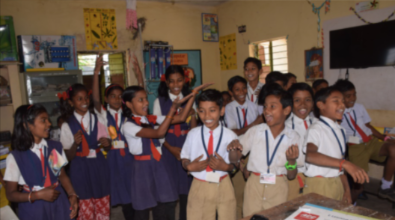
SOCIAL & FINANCIAL LITERACY PROGRAM
Financial Literacy program provides opportunities for learning and quality education that lays the foundation for the social and financial literacy among the children. It is also emphasizes the importance of giving children space to express themselves, to act on their own and to solve practical problem together. It strongly believes and respect child rights and strives to infuse sense of responsibility. While, children are primarily engaging with right to development and right to participation in the program of an advanced stage, organization also enable students to perform science experiments. Organization has to provide a discussion forum, chats, interactive features, E-Library, audio-visuals and animated graphics. We have already started teacher training programme on using E- Learning software with trained to Teachers and students. These systems are implemented in ZP schools with the support of SMC and Govt. Students must be able to read, write and learn all subjects thoroughly and also must develop interest in all subject by introducing various interesting techniques. The team also appointed “Balsakhi”or “Balsakha” for the students in weaker section so that they may get proper attention and feedback for improving their performance among students.Financial literacy program - 1275 Children from 40 ZP school
E-learning Program - 967 Children from 12 ZP School.
ANANDLOK AYURVEDIC CENTRE

ANANDLOK AYURVEDIC CENTRE
Anandlok is Aurvedic clinic run by Amhi Amchya Arogyasathi and aspirant doctors to create a better health system among the communities, Anandlok provides Ayurvedic treatments and uses its methods with the minimum affordable services prices for the people. Today, it is based at kurkheda, Gadchiroli District in Maharashtra. As such kind of treatments are e.g. Suvarnaprshan, Panchkarma, etc.
PERSONS WITH DISABILITY
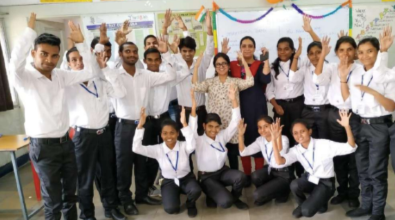
PERSONS WITH DISABILITY
In 2003 Amhi Amchya Arogyasathi realized that there is lack of awareness among community members about persons with disabilities, government machineries have not reached to them so it has started to interven into this to raise voices for the most vulnerable group of persons with disabilities. It had conducted a study of PwDs in which 21 persons with disability out of 7600 population were found and among them only 5 persons had disability certificate. It leads to the organization to work on for awareness building among persons with disabilities about their rights and government schemes available for them. It had started community-based rehabilitation of person with disabilities program in Kurkheda and Korchi block of Gadchiroli district. The program aims to mobilize PwDs through formation of SHGs and federations. At village level PwDs are mobilized and their SHGs are formed, then 10-12 SHGs have cluster federations, 5-10 cluster federations have block level federations and then the district level federation. This mechanism provides platform to the PwDs to come together, share their experiences, get information of the schemes and legal rights and raise their issues. At present 1147 PwDs are registered with these federations from 3 districts who have formed 11 cluster level federations and one district level federation of person with disabilities. People have formed 62 SHGs and established 3 Resource and Information centres for the person with disabilities.